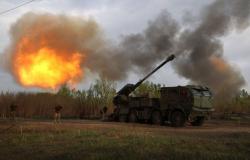Instead of investing free funds, 70 percent Lithuanians keep our assets in the form of cash, bank accounts or time deposits. According to the Bank of Lithuania (LB), residents have a total of 22.3 billion in deposits. EUR, in current accounts – 15.3 billion. EUR. According to experts, this is a worrying trend that not only limits the growth of financial assets when money makes money, but also allows them to be clipped by inflation.
In four years, the financial wealth of Lithuanian residents has doubled – although we are not investing, we are getting richer. According to economist Žygimantas Mauric, the Lithuanian economy has grown rapidly in the last decade, more and more people had the opportunity to enjoy higher incomes and, accordingly, more and more of them were able to set aside a certain part of their wealth.
He is also supported by Vytenis Kinduris, the chairman of the board of Letsinvest, a crowdfunding platform for exceptional real estate projects. “Year after year, we observe salary growth, catch up with European averages, work efficiency increases and we create more products. Good results and profits of companies contribute to the fact that the entire country’s economy is doing well, which affects all market participants”, says V. Kinduris.
Ž. Mauric notices that the extremely rapid growth of wealth is recorded during the pandemic. “At that time, spending opportunities were limited, so people naturally accumulated more wealth,” says the economist. “Another interesting phenomenon is that more and more wealth is inherited.”
When will “Do you invest?” replace “Where do you invest?”
Lithuania differs strongly from the Scandinavian countries: 70 percent. Lithuanians keep all their financial assets in cash, bank accounts and deposits, while Scandinavians – only 26%. Lithuanians the rest – 30 percent. – invests in return-generating assets, the majority of which are pension funds. Meanwhile, the Scandinavians, according to Ž. Maurico, as many as 74 percent invest in return-generating assets.
Economist Ž. Mauricas notices that if in Lithuania the question is “Do you invest?”, then in the Scandinavian countries the question is formulated differently – “Where do you invest, how do you invest?” According to the economist, the Scandinavian investment portfolio is very diversified: “A lot is invested in investment funds, pensions, insurance funds. Also – directly to shares. For the residents of these countries, a wide range of investment directions is quite common.”
Meanwhile, according to V. Kinduris, basic accumulation instruments remain popular in Lithuania – savings in various forms and open-ended deposits that provide the opportunity to quickly withdraw money.
“The only more massive accumulation and saving instrument in Lithuania are various pension schemes. I think that there is still a long way to go before encouraging and understanding the importance of investments before we reach the level of the Scandinavian countries, when 12-15% family income comes from saving and investing,” says V. Kinduris.
Why do Lithuanians invest so little?
According to Ž. Maurico, Lithuanians invest little due to a lack of trust – both in the general financial system and in financial intermediaries. Other reasons are the lack of financial literacy and the absence of traditions.
“There is no information and skills to invest in riskier but higher return assets. There are also no investment traditions, when in Scandinavia these traditions are old, skills are passed on from generation to generation,” says the economist.
V. Kinduris also agrees with him: “Free funds for investments appeared in our pockets relatively recently. Meanwhile, the Scandinavian countries have not seen either occupation or turmoil for several hundred years, so the amount of accumulated wealth in each family is larger. In addition, we do not invest so boldly in Lithuania because we have experienced various forms of expropriation of money.”
The most popular real estate investment has alternatives
Many Lithuanians choose to invest in real estate. According to V. Kinduris, this is one of the safest investment instruments, but one must not forget that direct real estate management also causes additional worries.
“There are factors such as housing maintenance, maintenance, amortization, taxes, market value fluctuations. This often causes additional stress, and the return against the backdrop of higher interest rates is very insignificant,” says V. Kinduris.
In his opinion, the crowdfunding platform is a good investment alternative because it offers the investor a clear and simple scheme. “Platforms like this, where you can invest with real estate as a pledge, combine the good properties of real estate as an investment and provide great flexibility,” says V. Kinduris. – By lending money and investing it, you know what the final result will be and you can flexibly distribute the risk. For example, having not one apartment, but your own share in five different real estate objects, which gives you the opportunity to actively influence your investment.”
Investing as permanent hygiene
According to Z. Maurico, in order to change Lithuanian investment habits, the population’s financial literacy should be increased, more information should be provided about various investment opportunities. “Of course, building trust in each other wouldn’t hurt either,” he says. – Especially the financial sector, which many people still do not trust. I have heard exotic explanations for not investing: it is often feared that the financial intermediary will take 1%. commission. But you won’t get 8% without investing. Like a dog on hay – you will neither eat it yourself nor give it to someone else.”
According to the economist, investing should become a part of life and hygiene – the same as paying for utility services or taking an interest in the candidates you intend to vote for in the elections: “People often do not even press a few buttons, even though they have a lot of money in their account and know that in the near future they will it won’t be necessary.”
V. Kinduris says that when taking the first steps in investing, one should assess one’s risk appetite and build an investment portfolio accordingly, without putting all the eggs in one basket. “Some people have a high risk appetite, they want to invest in the stock market and see the ups and downs, while others have a low appetite. I would advise you to first assess it and plan your investments accordingly. I always repeat that investing should bring positive emotions and not stress, even though it is always associated with risk”, says V. Kinduris.
Tags: Lithuanians money socks Sweden AINA
-





